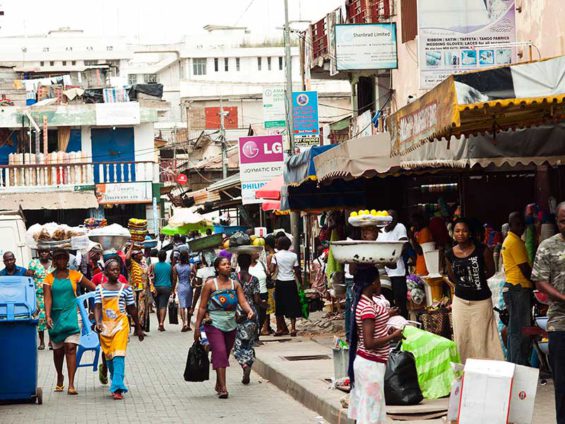
Audio By Carbonatix
About 2.5 million persons, constituting one out of every four Ghanaian youth between the ages of 15 to 35 years are not engaged in schooling, learning a vocational skill or employment.
The Not in Education, Employment or Training (NEET) phenomenon which is said to decline as age increases, is very prevalent among the 21 olds.
Regions with the highest NEET rates in the third quarter of last year were Savannah with 27.8 per cent, North East with 24.3 per cent and 24.2 per cent for Upper East, according to the third quarter labour statistics report of the Ghana 2022 Annual Household Income and Expenditure Survey (AHIES) released by the Ghana Statistical Service (GSS).
The report which was launched on Wednesday, May 4 indicated that on the average, there were close to 11 million persons who were employed across the three quarters of 2022 while some 7.5 million persons remained employed throughout the three quarters.
It further noted that for the 8.6 million persons who were employed in both first quarter and second quarter, about 320,000 persons became unemployed in the third quarter.
“Out of about 810,000 persons employed in the first quarter who became unemployed in second quarter, close to 510,000 persons regained employment in the third quarter while more than 110,000 remained unemployed,” the report stated.
The AHIES has a primary objective of establishing a system for the collection of economic, demographic, and social data to improve the measurement of Gross Domestic Product.
It also has secondary objective of providing baseline data for the estimation of household consumption expenditure on a regular basis; information for updating National Accounts and data to update the basket of consumer goods and services for rebasing Consumer Price Index.
It also has an objective of providing quarterly and annual data on a wide range of socio-economic and demographic variables such as labour force, food insecurity, employment, and income.
Sharing highlights of the report, Professor Samuel Kobina Annim, disclosed that about 1.76 million persons were unemployed in the third quarter, with the number of females as twice high as that of males.
He revealed that out of about 810,000 persons employed in the first quarter and became unemployed in the second quarter, close to 510,000 persons regained employment in the third quarter while more than 110,000 remained unemployed.
The government statistician explained that about 217,000 more persons employed in the Industrial sector in the first quarter had transitioned to other sectors relative to the 117,000 and 182,000 persons respectively for Agriculture and Services sectors.
He noted that between the first and second quarters, about 155,000 persons transitioned out of the formal to the informal employment sector in both the second and third quarters.
Meanwhile, he noted, more than 89,000 employed persons in the informal sector in the first quarter transitioned to and remained in the formal sector in the second and third quarters.
He indicated that the services sector with a rate of 57.7 per cent recorded the highest share of employed persons in first quarter who became unemployed in the second and third quarter as against agriculture’s 21.4 per cent and Industry’s 20.9 per cent.
“The agriculture sector absorbed a net of about 54,000 persons and Services more than 38,000 persons from the industry sector across the three quarters.
“In the third of quarter, the agriculture sector maintained a net gain of more than 25,000 persons from the Services sector” he said.
The Deputy Minister of Employment and Labour Relations, Mr Bright Wireko-Brobby who chaired the launch said timely data to inform public and private decision making and research.
He said the Government in this regard was reliant on employment and labour statistics such as the AHIES to pursue its decent work agenda which is in line with the Ministry’s mandate of ensure decent work for all citizens through job creation, social protection and work rights.
He said it was time for Ghanaians to review what they classified as jobs and employment.
“Many times, if people are in certain jobs, they do not see them as jobs. So, if they are not in tie and coat, they always think they are unemployed,” he said.
Latest Stories
-
Ghana is rising again – Mahama declares
28 minutes -
Firefighters subdue blaze at Accra’s Tudu, officials warn of busy fire season ahead
59 minutes -
New Year’s Luv FM Family Party in the park ends in grand style at Rattray park
1 hour -
Mahama targets digital schools, universal healthcare, and food self-sufficiency in 2026
1 hour -
Ghana’s global image boosted by our world-acclaimed reset agenda – Mahama
2 hours -
Full text: Mahama’s New Year message to the nation
2 hours -
The foundation is laid; now we accelerate and expand in 2026 – Mahama
2 hours -
There is no NPP, CPP nor NDC Ghana, only one Ghana – Mahama
2 hours -
Eduwatch praises education financing gains but warns delays, teacher gaps could derail reforms
2 hours -
Kusaal Wikimedians take local language online in 14-day digital campaign
3 hours -
Stop interfering in each other’s roles – Bole-Bamboi MP appeals to traditional rulers for peace
3 hours -
Playback: President Mahama addressed the nation in New Year message
4 hours -
Industrial and Commercial Workers’ Union call for strong work ethics, economic participation in 2026 new year message
6 hours -
Crossover Joy: Churches in Ghana welcome 2026 with fire and faith
6 hours -
Traffic chaos on Accra–Kumasi Highway leaves hundreds stranded as diversions gridlock
6 hours

